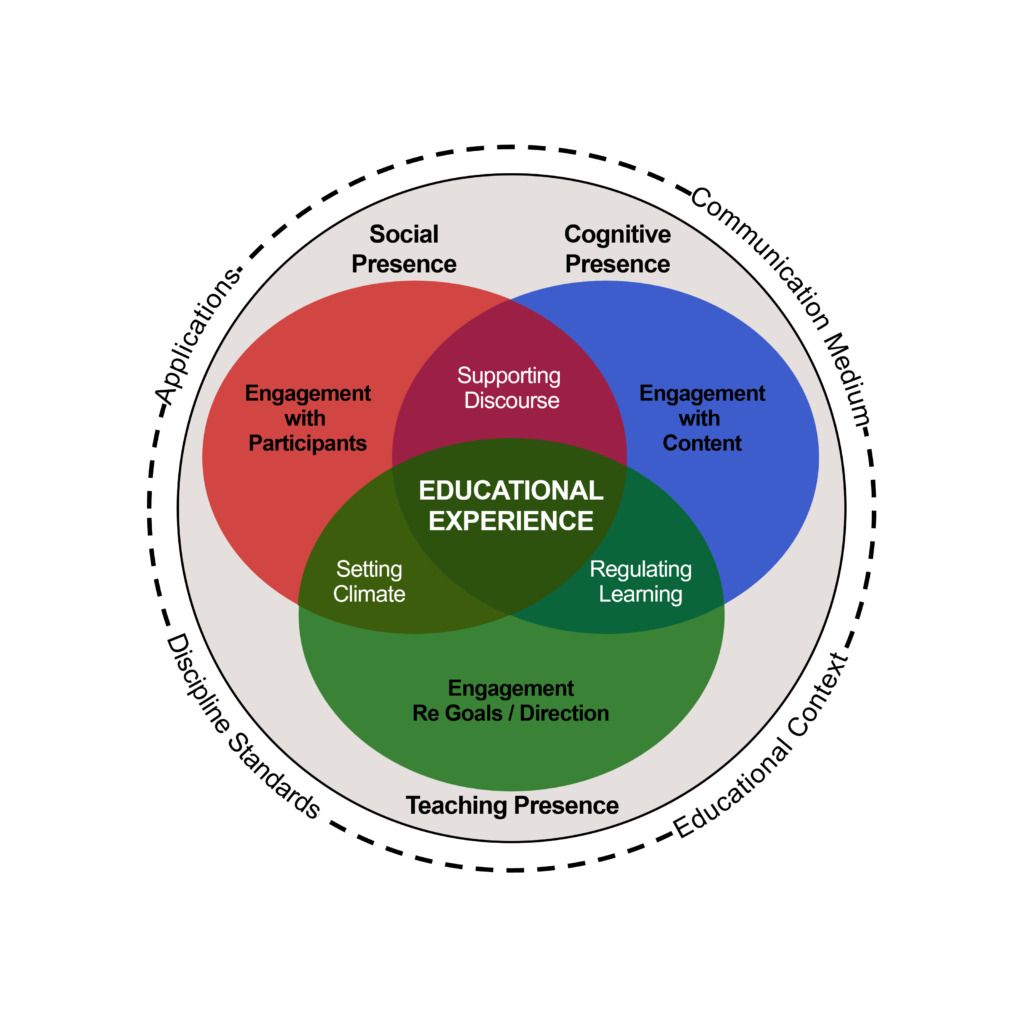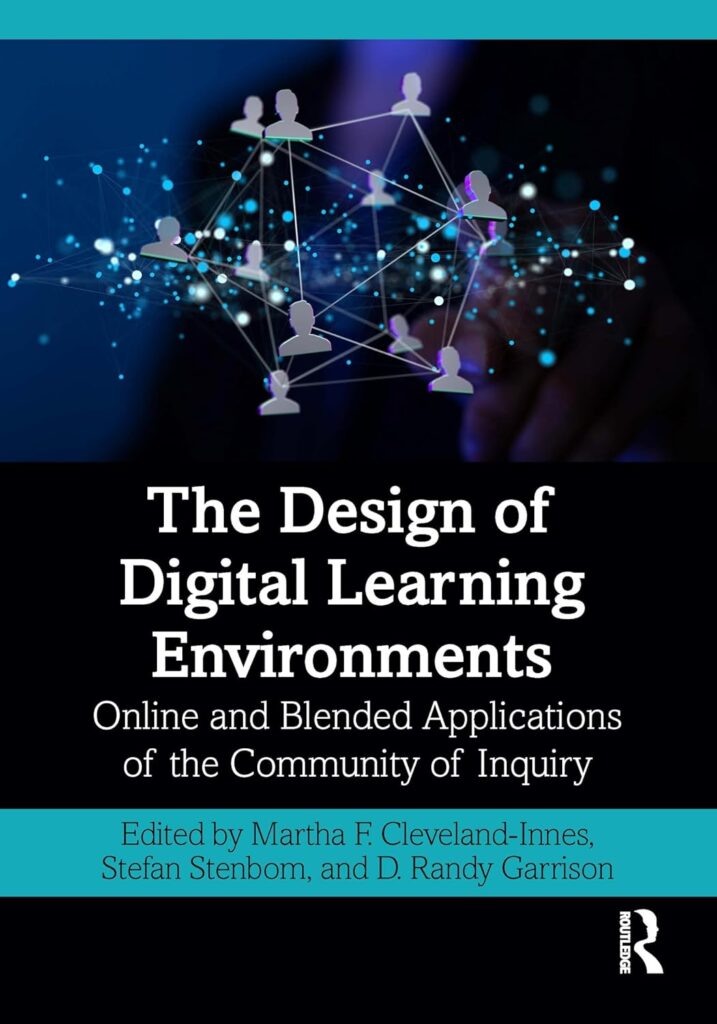by Stefan Stenbom, KTH Royal Institute of Technology, Sweden.
In an era where digital and blended learning forms the backbone of education, educators, designers, and administrators must be equipped with the latest methods and knowledge to navigate this evolving landscape. The book The Design of Digital Learning Environments: Online and Blended Applications of the Community of Inquiry arrives as a timely resource, providing comprehensive guidelines for enhancing online and blended learning experiences. As one of the editors of this work, along with the notable scholars Martha F. Cleveland-Innes and D. Randy Garrison, I am happy to share insights from our collaboration, which draws upon the widely recognized Community of Inquiry framework to shape impactful educational practices.
The framework
The Community of Inquiry is a theoretical framework created to guide the design and analysis of teaching and learning. Developed initially to structure online educational experiences, the Community of Inquiry framework rests on foundational theories of social constructivism and inquiry-based approaches that emphasize active, collaborative, and meaningful learning. It consists of three interrelated elements—Teaching Presence, Social Presence, and Cognitive Presence—collectively shaping the educational experience.
Teaching Presence encompasses the multifaceted roles and responsibilities of creating and maintaining effective educational environments. It includes the planning and design of educational experiences, the facilitation of discourse, and the direction of cognitive and social processes. Social Presence refers to the ability of participants to feel connected to others in an online environment, fostering emotional and social interactions crucial for collaborative learning. Cognitive Presence is at the heart of the learning process, involving exploring, constructing, and applying knowledge through critical thinking and collaborative discourse.

Since its introduction, the Community of Inquiry framework has been widely adopted and adapted, influencing a broad range of digital education practices globally. The seminal research article has been cited more than 10,000 times according to Google Scholar. Today, the Community of Inquiry encompasses a vibrant field of research dedicated to exploring the processes and outcomes of learning using the framework. To support and expand the field, there is a dedicated website that serves as a central hub for research. This website offers a comprehensive repository where scholars and practitioners can access various resources, including a repository, discussions, and editorials. The website URL is: https://www.thecommunityofinquiry.org/
The book

The Design of Digital Learning Environments: Online and Blended Applications of the Community of Inquiry showcases the latest advancements in utilising the Community of Inquiry as a foundational tool for designing online and blended courses. In the book, 26 researchers solidify the framework, validating it through comprehensive research and testing to ensure its practical applicability. Among these contributors are both esteemed, well-known researchers in the field and promising, up-and-coming scholars. The book is designed to serve as a comprehensive guide for designing and delivering high-quality collaborative and constructivist learning experiences within digital environments. The book elaborates on the Community of Inquiry theoretical foundations and provides practical applications, offering a range of perspectives, tools, techniques, and real-world examples on how higher education courses might be effectively designed and implemented using this framework.
The book is structured into five parts:
- Introduction,
- Guiding Principles,
- Course Design,
- Course Delivery,
- and Conclusion, Limitations, and Recommendations.
It begins with an overview of the Community of Inquiry, detailing foundational concepts and history. Subsequent sections delve into theoretical underpinnings, practical strategies for designing and delivering digital courses, and effective engagement techniques. The final part synthesises insights, discusses research limitations, and offers recommendations for future applications. This structure ensures a comprehensive guide from theoretical exploration to practical application in digital learning environments.
The purpose of this editorial volume is to serve as a resource for those involved in the design, implementation, evaluation, or management of digital environments. Educational technologists, course designers, and faculty developers will find the book particularly valuable, especially those transitioning from emergency remote teaching to more deliberate and effective online education strategies. It offers a bridge between theory and practice, providing evidence-based strategies and practical tools that can be immediately applied to enhance course quality and student engagement. By grounding these applications in the well-established Community of Inquiry framework, the book empowers educators to create dynamic, effective, and inclusive digital learning spaces.
Cleveland-Innes, M.F., Stenbom, S., & Garrison, D.R. (Eds.). (2024). The Design of Digital Learning Environments: Online and Blended Applications of the Community of Inquiry (1st ed.). Routledge. https://doi.org/10.4324/9781003246206

Author
Stefan Stenbom, KTH Royal Institute of Technology, Sweden.













